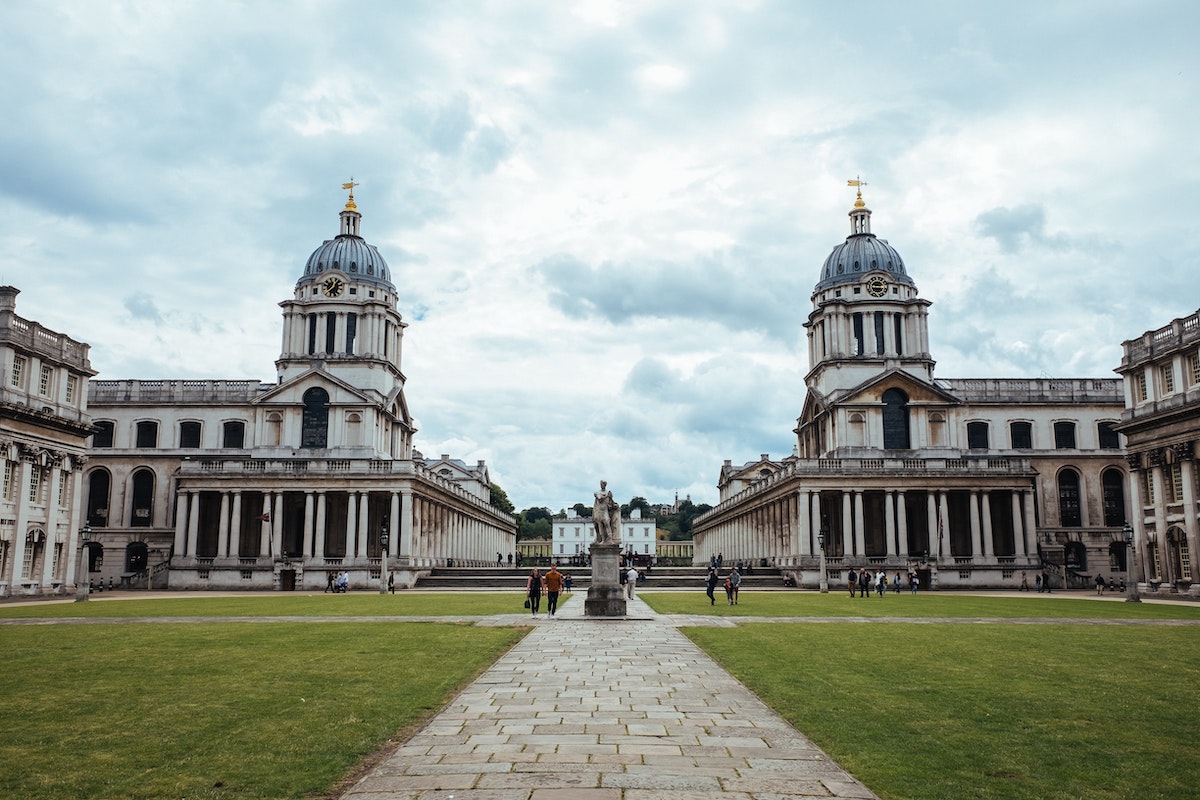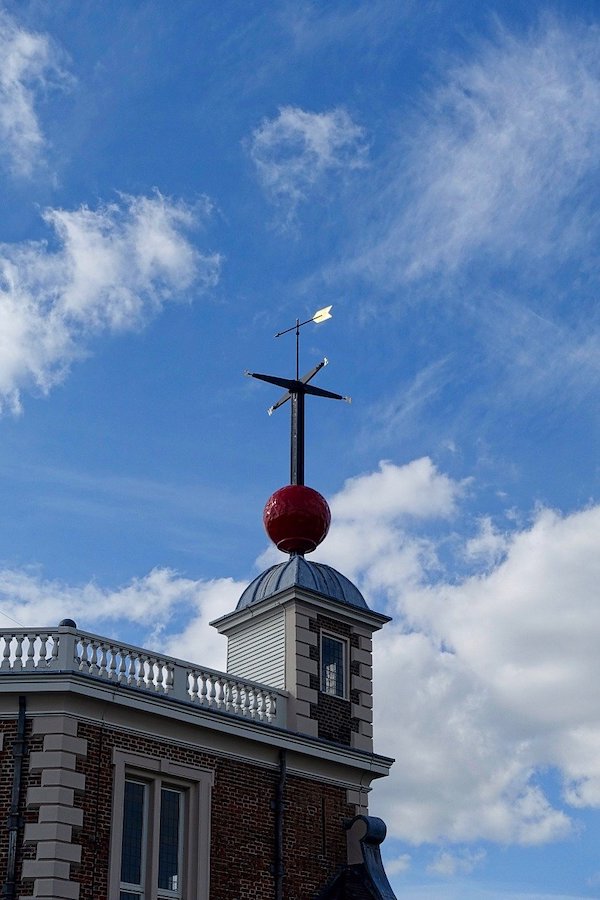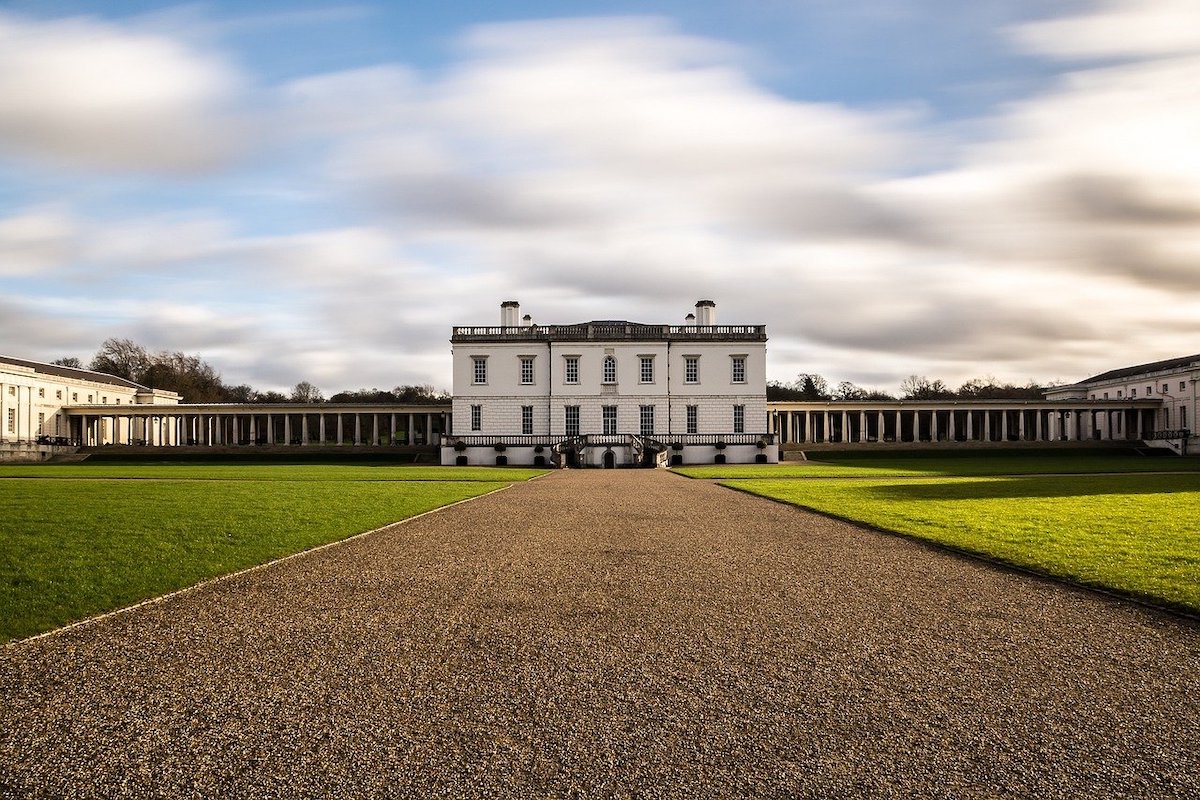
Make Time to Visit Greenwich, England: Where East Meets West
By: Robin Van Auken
Skip to Section
Greenwich is where east meets west. It’s where time begins and where the first clock chimes the midnight hour. Each day at 12:55 p.m., the Greenwich Time Ball atop the Royal Observatory rises halfway up its mast, signaling the time to ships along the Thames. At 12:58, it rises all the way to the top. At 1:00 p.m., the ball falls and all around the world, clocks and watches are adjusted to Greenwich Mean Time (GMT). Here are a few reasons you should make time to visit Greenwich, England.
Royal Observatory at Greenwich

The Red Ball at the Greenwich Royal Observatory – image via Pixabay
Greenwich, England – longitude 0° 0′ 0” and latitude 51° 28′ 38” N, defines both time and place for the world. All places have a latitude (their distance north or south of the Equator) and a longitude (their distance east or west of the Greenwich Meridian). Greenwich was chosen to be the Prime Meridian of the world in 1884 when 41 delegates from 25 nations met in Washington, D.C. for the International Meridian Conference.
On the south bank of the Thames River, Greenwich is a World Heritage Site recognized for its concentration and quality of buildings of historic and architectural interest. The town became a popular resort in the 17th century with opulent houses from the Georgian period constructed above the town center.
Greenwich is home to the Palace of Placentia, which dates to the 15th century. The birthplace of many in the House of Tudor, including Henry VIII and Elizabeth I, the palace fell into disrepair during the English Civil War (1642—1651) and was rebuilt in 1873 as the Royal Naval Hospital for Sailors by Sir Christopher Wren. It became the Royal Naval College in 1873 and then, in 1998, the Greenwich Foundation took control. At present, it is used by the University of Greenwich and the Trinity College of Music.
Greenwich, England also is home to Cutty Sark, the only remaining original Clipper ship from the 1800s, and Gipsy Moth IV, a 54-foot ketch that Sir Francis Chichester commissioned specifically to sail single-handed around the globe, racing against the times set by the clipper ships of the 19th century.
Greenwich Park is home to the National Maritime Museum, which is actually comprised three sites: the Maritime Galleries, the Royal Observatory, and the Queen’s House. Together these constitute one museum working to illustrate for everyone the importance of the sea, ships, time, and the stars and their relationship with people.
Home of Greenwich Mean Time and the Prime Meridian Line, the Royal Observatory is one of the most important historic scientific sites in the world. It is the official starting point for each new day, year and millennium—at the stroke of midnight GMT as measured from the Prime Meridian. In 1675, Charles II founded the observatory to improve navigation at sea and appointed John Flamsteed as his first Astronomer Royal.
Disasters at sea, including a 1707 sinking that killed more than 2,000 men, prompted Parliament to find the so-much desired longitude of places—one’s exact position east and west—while at sea and out of sight of land. In 1714, Parliament established the Board of Longitude and offered a £20,000 reward (equivalent to about £2 million today) to anyone who could solve the problem of finding longitude at sea. Nearly 60 years later, John Harrison, a Yorkshire clockmaker, claimed the prize that stumped famous astronomers, scientists, and mathematicians—Harrison’s H1 changed navigation forever.
Queens House

Queens House – image via Pixabay
Inigo Jones designed the Queens House in 1616, commissioned by King James I’s wife, Anne, to build a new pavilion for her at Greenwich. A student of Roman and Renaissance architecture, Jones designed the first fully Classical building seen in England. Though generally called Palladian in style, its model was the Medici villa at Poggio a Caiano and it also served as a model for the White House in Washington D.C. The house’s design, classical in proportion and harmony, was revolutionary in Britain when the majority of buildings were Tudor-style red brick.
National Maritime Museum Galleries
The National Maritime Museum galleries are small, yet spectacular. The collections comprise about 2.48 million items, many on loan to museums elsewhere in Britain. The thematically arranged galleries contain the most important holdings in the world on the history of Britain at sea, including maritime art, cartography, manuscripts, official public records, ship models and plans, scientific and navigational instruments, and time-keeping and astronomy.
It also features more than 700 items about Vice-Admiral Horatio Nelson (1758—1805), Britain’s greatest naval hero. His exploits were commemorated in paintings, prints, souvenirs, poetry and song and his death at the Battle of Trafalgar made him the model of duty and devotion to his country.
During the Victorian era, Britons found it difficult to mesh Nelson’s celebrated standing with his immoral private life: he deserted his wife for a ménage a trois with Lord William Hamilton, British envoy to Naples, and his wife, Lady Emma Hart Hamilton, who bore his illegitimate daughter, Horatia.
In 1800, Nelson’s wife, Fanny, issued an ultimatum on whether it was to be her or Emma. Nelson replied, “I love you sincerely but I cannot forget my obligations to Lady Hamilton or speak of her otherwise than with affection and admiration.”
The two never lived together again. The contradictions between the hero and the scoundrel have prolonged fascination with Nelson’s life and career for 200 years.
About the Author
Robin Van Auken, MA, RPA, is the CEO of Hands-on Heritage. She is an anthropologist and registered professional archaeologist (National 15069). She specializes in working with communities, galvanizing individuals to contribute their memories, photographs, and artifacts to develop legacy projects. Through in-depth, sensitive interviews, she learns the important stories that connect people through time and space. Robin especially enjoys the challenge of hunting for historic photographs and artifacts that highlight America’s history. As a professional archaeologist, she has directed multi-year public cultural heritage projects, working with hundreds of volunteers and educating thousands of visitors.
Featured image via Unsplash.
Information published on this website and across our networks can change over time. Stories and recommendations reflect the subjective opinions of our writers. You should consult multiple sources to ensure you have the most current, safe, and correct details for your own research and plans.
Frayed Passport is a participant in the Amazon Associates Program, an affiliate advertising program designed to provide a means for sites to earn advertising fees by advertising and linking to Amazon.com. We also may share links to other affiliates and sponsors in articles across our website.




